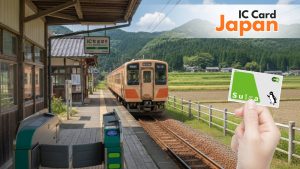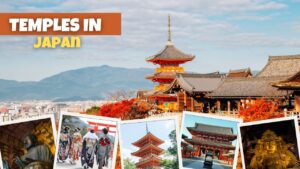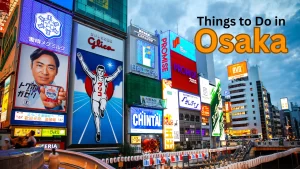Exploring Japan’s breathtaking coastlines doesn’t have to break the bank. By relying on local train Japan networks and the country’s extensive ferry routes, travelers can enjoy a slow, scenic, and budget-friendly journey that reveals fishing villages, hidden beaches, and offshore islands often missed by tourists rushing on the Shinkansen.
Top 10 Must-Visit Shrines and Temples in Japan for Culture Lovers
Below is a detailed guide covering everything you need to know—routes, passes, costs, and tips—for discovering coastal Japan without draining your wallet.
Why the Coast Is Japan’s Best-Kept Secret
Japan’s coastline stretches over 29,000 kilometers, touching every climate zone from snowy Hokkaido to subtropical Okinawa. Yet most tourists race between Tokyo, Kyoto, and Osaka on the Shinkansen, missing these incredible seaside worlds. Coastal towns reveal centuries-old shrines, windswept cliffs, and working harbors where life still follows the tide.
How Much is a Trip to Japan? Full Cost Guide for All Plans
Traveling by local train Japan routes means you see it all at ground level: pine-fringed beaches, lighthouses perched on dramatic headlands, and villages where you can stop for freshly grilled squid straight off the boats. This is where you’ll find authentic Japanese hospitality, far from souvenir stands and package tours.
Preparing Your Journey: Blueprint for Budget Exploration
Pick the Right Season
Spring (March–May) brings blooming cherry trees that frame ocean views in delicate pink. Temperatures are mild, making coastal hikes or bike rides comfortable. Summer offers lively beach festivals and swimming-friendly waters, though humidity calls for early starts and plenty of cool drinks.
Best Things to Do in Osaka (Japan): Places to Visit & Where to Stay
Autumn (September–November) paints hillsides gold and crimson, perfect for photography along rugged cliffs. Winter reveals a stark, poetic side of the coast: drift ice floating in Hokkaido, steaming hot springs overlooking snow-covered beaches, and fewer crowds almost everywhere.
Passes That Save Serious Money
The Seishun 18 Kippu remains a legend among budget travelers. Valid for five non-consecutive days of unlimited local and rapid train rides across the country, it allows you to cross entire regions for the cost of a single Shinkansen ticket. For focused coastal trips, look into the Setouchi Area Pass, which includes ferries and trains in the island-dotted inland sea—ideal for art lovers heading to Naoshima and Teshima.
Prefectural day passes, like the JR West Kansai WIDE Area Pass, also let you hop between seaside towns for less than the price of two individual tickets. Many ferry companies issue multi-ride tickets or island-hopping passes that can cut your transport budget in half.
Map Your Coastal Loop
- Seto Inland Sea – a calm, island-filled waterway scattered with art installations, citrus orchards, and quiet fishing villages.
- Sanriku Coast (Tohoku) – dramatic cliffs, coves carved by ancient tsunamis, and a resilient culture rebuilt after the 2011 disaster.
- Kyushu & Okinawa – warm waters, coral reefs, and a relaxed island pace where ferry rides become mini-cruises.
- Hokkaido – wild northern bays, rich seafood markets, and winter drift ice tours that feel almost Arctic.
Local Trains: Japan’s Scenic Slow Ride
Traveling on local train Japan lines is like moving through a living landscape painting. These trains often hug the shore, offering uninterrupted ocean views and access to small stations that rarely see foreign visitors.
- Gono Line (Aomori–Akita): Famous for golden sunsets over the Sea of Japan and occasional onboard shamisen performances by local musicians.
- Sanriku Railway (Iwate): Rebuilt after the 2011 tsunami, it winds through fishing villages and pine-covered cliffs, symbolizing resilience and community spirit.
- Nichinan Line (Miyazaki): Palms sway beside the tracks while the Pacific sparkles just beyond your window, creating a tropical atmosphere rarely associated with Japan.
Money-Saving Tips
Purchase regional day passes to travel unlimited distances for a flat fee, and plan routes with apps like HyperDia to avoid expensive limited express trains. Ride outside rush hours to secure a window seat and enjoy quieter carriages. Grab a local ekiben (station bento) or snacks from tiny shops for a taste of the region—often cheaper and fresher than convenience-store fare. Pack light so you can jump on and off at unplanned stops when something outside the window catches your eye.
Onboard Experience
Expect spacious bench seating, wide windows, and a leisurely pace that invites conversation or quiet contemplation. Some scenic lines add special touches: JR Kyushu’s themed trains feature wooden interiors and onboard cafés serving regional specialties, turning the journey into an attraction in itself.
Ferries: Japan’s Floating Highways
Ferries in Japan are not just transport—they’re part of the adventure, offering open-air decks, cabins with ocean views, and the chance to watch coastal life from the water.
- Hiroshima → Miyajima: A short but unforgettable trip to see the famous “floating” torii gate and wild deer roaming the island.
- Shikoku → Kyushu Overnight: A gentle crossing that doubles as your night’s lodging, complete with shared baths and starry skies.
- Okinawa’s Kerama Islands: Clear turquoise waters, ideal for snorkeling and spotting sea turtles, are just an hour away by high-speed ferry.
Tips for Booking and Riding
Reserve tickets online for busy summer weekends, but keep in mind that many short routes still allow walk-up boarding. Weather can cause cancellations, so build flexibility into your itinerary. Large ferries often include restaurants, lounges, and even hot-spring baths, making the voyage a relaxing break rather than just a transfer.
Sample Itineraries for Every Schedule
Three-Day Mini Escape
Begin in Osaka, ride local trains around the Kii Peninsula to explore seaside temples and hot springs in Wakayama, then ferry to Tokushima on Shikoku for a taste of island culture and freshly grilled fish straight from the dock.
One-Week Island-Hopping
Start in Hiroshima and use the Setouchi Area Pass to reach Naoshima’s contemporary art museums, Teshima’s rice terraces, and Shodoshima’s olive groves. Continue by local train to Takamatsu for legendary Sanuki udon and panoramic views of the inland sea.
Two-Week Grand Coastal Loop
Travel from Aomori along the Gono Line’s spectacular Sea of Japan views, ferry to Sado Island for gold-mining history and taiko drumming, then follow the coast south through Kanazawa’s seafood markets and the Noto Peninsula before finishing in Kyushu’s hot-spring haven of Beppu.
Eat Like the Coast Locals
Food is half the joy of coastal travel. In Kanazawa, wander Omicho Market for morning-fresh sushi bowls. Hakodate’s early-morning market serves steaming crab miso soup and buttery uni. Farther south, Beppu’s waters yield horse mackerel so fresh it practically glitters.
Seek out smaller fishing villages for unique experiences: Ine in Kyoto Prefecture has traditional boathouses where families still store their boats beneath their homes, while Tomonoura in Hiroshima feels like a living Edo-period painting. Join a local festival or try your hand at seaweed harvesting for a deeper connection to coastal culture.
Travel Smart: Practical Tips for Smooth Sailing
- Pack Light: A small backpack or rolling bag makes boarding narrow ferries and small local trains effortless.
- Use IC Cards & Apps: Suica or Pasmo cards simplify payments on most local train Japan routes and even some ferries, while Google Maps or Japan Transit Planner apps help you navigate complex timetables in English.
- Learn a Few Key Phrases: Simple words like “futsū densha” (local train) and “fune” (boat) can make ticket buying smoother and create friendly moments with station staff.
Budget Snapshot: What a Day Costs
- Transportation: With a regional pass, expect ¥2,500–¥4,000 (around $17–$27 USD) for unlimited trains and several ferry rides.
- Meals: Street food and market seafood average ¥1,500–¥2,500 ($10–$17 USD).
- Lodging: Hostels or capsule hotels start around ¥3,000 ($20 USD), while overnight ferry cabins double as affordable, ocean-view accommodation.
These numbers mean a full day of coastal exploration can easily stay under ¥8,000–¥10,000 ($55–$70 USD), leaving room for occasional splurges on local treats.
Let the rails and tides guide you. Skip the rush, follow the coast, and discover a side of Japan that rewards every extra minute you give it.
FAQs
1. What is a local train in Japan?
A local train in Japan is a regional train that stops at every station along its route. Unlike Shinkansen (bullet trains), local trains move slower but are much cheaper, making them ideal for budget travelers exploring coastal towns and rural areas.
2. How much does it cost to travel on a local train in Japan?
Ticket prices vary depending on distance and region. On average, a single local train ride costs ¥200–¥800 ($1.50–$6). Budget passes like the Seishun 18 Kippu can reduce costs significantly, allowing unlimited rides on local trains for a fixed price.
3. Can I use a Japan Rail Pass on local trains?
Yes. The Japan Rail Pass is valid on most local trains operated by JR lines. However, some private railways and small regional lines may not accept it, so check your route in advance.
4. Are local trains in Japan comfortable for long journeys?
Local trains are comfortable for short to medium distances, with bench seating, wide windows, and air conditioning. For very long trips, you may prefer limited express trains, but local trains provide scenic views and a closer connection to local life.
5. How do I buy tickets for local trains in Japan?
Tickets can be purchased at station ticket machines, ticket counters, or using IC cards like Suica or Pasmo, which also work for buses and some ferries. For passes like Seishun 18 Kippu, tickets are available at JR ticket offices.
6. Can I bring luggage on local trains?
Yes, but space is limited. Keep luggage small or use a backpack. Large suitcases can be challenging on crowded trains, especially during peak hours or in smaller rural stations.
7. What are the best coastal routes for local trains in Japan?
Some of the most scenic routes include:
- Gono Line (Aomori–Akita) – Sea of Japan views
- Sanriku Railway (Iwate) – Rebuilt coastline with cliffs and fishing villages
- Nichinan Line (Miyazaki) – Tropical coastal landscapes
8. Can local trains connect with ferries for island hopping?
Yes. Many local trains stop at ports or ferry terminals, allowing seamless transfers. For example, in Hiroshima, local trains connect to ferries to Miyajima Island, while the Seto Inland Sea region has multiple train-ferry combinations.
9. Are there passes specifically for local trains and ferries?
Yes. Regional passes like the Setouchi Area Pass or local ferry passes allow unlimited travel within specific coastal regions. These are cheaper than buying individual tickets for each ride and perfect for island hopping.
10. Is it safe to travel on local trains in Japan?
Absolutely. Japan’s local trains are punctual, clean, and safe. Stations are well-marked in English, and staff are helpful. Traveling off-peak can make your journey more comfortable, while scenic coastal routes offer a unique and relaxing experience.





